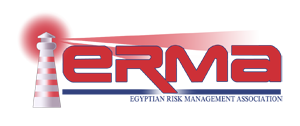Production Optimization & Process Plant Operational Troubleshooting
10th – 14th February , 2019
Cairo – EGYPT
Objectives
Upon Completion of The course, Participants will be able to:
Learn and understand the fluid properties
Learn how the process plant work and control
Check data accuracy, system function, report discrepancies to maintenance of valves.
Explain theory behind flow lines ,wellhed and check valves for preparing and testing according to standard procedures
Understanding process plant troubleshooting
Understanding the mechanisms ,function of separation process
Explain the theory and mechanisms of emulsion
Understand the production Optimization technique .
Participants
Production & Process Engineers and Technicians.
Contents
Introduction
Crude oil properties and compositions
Crude oil types
Crude oil handling problems
Making the Equipment Work, Facility Types
Well flow lines gathering point
Plant layout and integration
Principles of process operation
Introduction to control systems
GC processes troubleshooting and systems
DCS, system operation and monitoring
PLC systems and operation
UPS systems and monitoring systems
SCADA systems and monitoring techniques.
Control systems using simulator
Principles of calibration of control systems
Precautions during calibration Steps in control systems calibration
Monitoring equipment performance
Routine instrumentation
Controllers checks & reporting defective controls to maintenance
Conducting root cause analysis for all operating parameters
Control system response for ESD
Choosing a Process
Introduction
Controlling the Process, Operation of a Control Valve, Pressure Control, Level Control, Temperature Control, Flow Control
Basic System Configuration
Wellhead and Manifold, Separation, Oil Treating, Lease Automatic Custody Transfer (LACT), Pumps, Water Treating, Compressors, Gas Dehydrators
Control types, components
Level control
Pressure Control
Temperature control
Control loops type
Control loop components
Basics of operation on Instrumentation controls (LCV, PCB, transmitter, switches)
Instrumentation functions
Types of instrumentation
Instrumentation locations
Control loop types
Components of instruments
Instrument variable measurement
Control troubleshooting
Sample exercises
Control Systems
Control systems type
Check data accuracy ,
system function and operate
check control system functions
DSC,PLC, SCADA
Performance of control system
Calibration and adjustment
Troubleshooting of control system and take action
Check for GC equipment as one unit
Operation according to international standard
Operation according to international procedures
Production optimization using check system analysis
Nodal analysis technique
Procedure of appliying Nodal analysis
Oil and Gas Separation
Factors Affecting Separation
Equipment Description
Horizontal Separators, Vertical Separator
Spherical Separators, Other Configurations
Scrubbers
Horizontal vs. Vertical Vessel Selection,
Vessel Internals
Inlet Diverters, Wave Breaker, Defoaming Plates
Vortex Breaker, Mist Extractor
Potential Operating Problems
Foamy Crudes, Paraffin, Sand
Liquid Carryover and Gas Blowby
Troubleshooting and take action
Settling, Drop Size, Retention Time
Re-entrainment
Oil and Water Separation
Introduction,
Equipment Description,
Horizontal Separators, Vertical Separators
Horizontal vs. Vertical Selection
Vessel Internals
Coalescing Plates 143, Sand Jets and Drains
Emulsions
Theory,
Gas Separation, Oil/Water Settling
Water Droplet Size in Oil, Oil Droplet Size in Water
Retention Time
Separation problems
Troubleshooting and take action
Crude Oil Treating Systems
Methods of emulsion treatment
Heating
Chemical demulsfiers
Washing water with mixing valve
Electromagnetic field ( dehydration and desalter)
Emulsion Treating Theory
Forming Emulsions, Emulsifying Agent
Demulsifiers
Gravity Separation,
Coalescence, Viscosity, Temperature Effects
Heat Input Equations, Water Droplet Size and Retention
Time, Coalescing Media Electrostatic Coalescers
Treating Equipment
Vertical Treaters, Horizontal Treaters
Electrostatic Treaters
Troubleshooting and take action
Produced-Water Treating Systems
Introduction,
System Description
Theory
Gravity Separation, Dispersion, Coalescence, Flotation
Treating Equipment,
Settling Tanks and Skimmer Vessels
Skimmer Sizing Equations, Plate Coalescers
Skimmer/Coalescers, Precipitators/ Coalescing Filters
Free-Flow Turbulent Coalescers (SP Packs)
Flotation Units, Hydrocyclones, Disposal Piles
Skim Pile
Drain Systems
Information Required for Design
Influent Water Quality,
Produced Water, Soluble Oil Deck Drainage
Equipment Selection Procedure
Equipment Specification
Example: Design the Produced-Water Treating System for the
Data Given
Troubleshooting and take action
Troubleshooting for separation unit
Troubleshooting for treatment unit
Safety System (Normal & Emergency shutdown System, Fire & Gas detection).
Risk assessment
Safety precaution
Fire and explosion
Loss prevention
Types of hazards
The HAZOP study techniques
Hazards analysis
Preventing fire
Safety culture
The importance of PPE
Safety manage system
The safety procedures and policies
The emergency response
The noise hazard
The leaks and spills
The fumes and volatile vapours
The gas detectors uses and operation
Health and safety related to ranks and tanks farm
Safety Operation of Storage Tanks (Safety related devices)
Course assessment .
Language : English & Arabic .
Fees : 2850 $
Daily schedule :
Lecture1 9 : 11 Am
Rest 1 11 : 11.15 Am
Lecture2 11.15 : 12.45 Pm
Rest 2 12.45 : 2 Pm
Lecture3 2 : 3 Pm


Leave A Comment